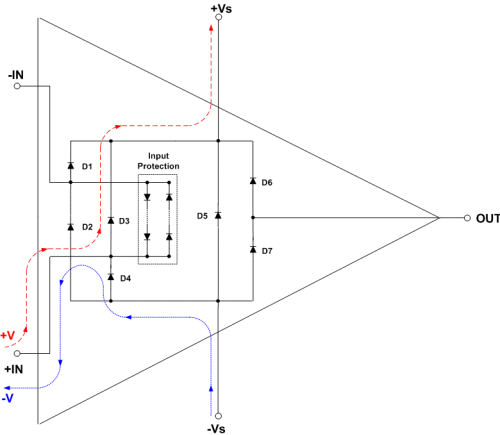Dear all TI staff,
I'm wondering if there is an op-amp able to mantain the high input impedence even when there's no power supply.
I've found this from linear (dn533f.pdf) but I'm sure that there is something from TI as well.
In particular I have a resistor partition with very high value (3 MOhm) which goes into the + input of an op-amp.
Sometimes this op-amp doesn't have the power supply present but the rest of the circuit still work thanks to a battery.
The idea is to maintain the + input of the op-amp in high impedence, otherwise the resistor partition changes value dramatically.
Thanks in advance



